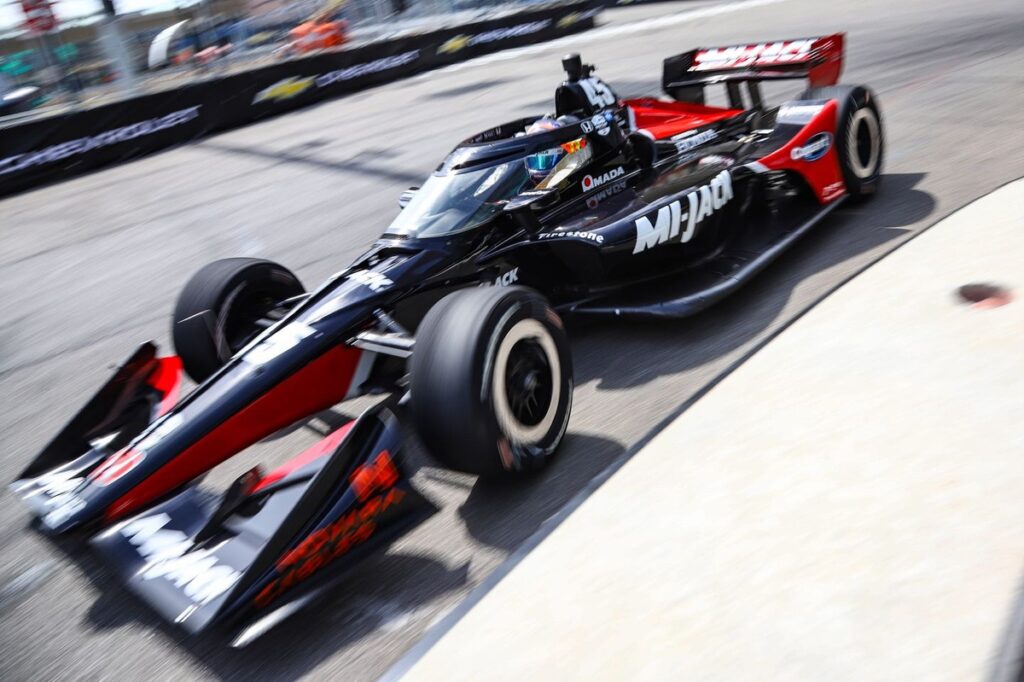High-Impact Collisions Mark the Chevrolet Detroit Grand Prix
The recent Chevrolet Detroit Grand Prix was marred by a dramatic and dangerous crash during the final stages of the race, leading to a temporary red flag. The incident involved drivers Louis Foster and Felix Rosenqvist, highlighting the inherent risks of high-speed motorsport racing.
Sequence of Events Leading to the Crash
With just 17 laps remaining in the 100-lap race, Foster was positioned behind Rosenqvist, trailing him by two car lengths. As Foster attempted to close the gap, a sudden suspension failure caused his vehicle to lose control, sending him crashing into the outside wall. The impact was severe enough to send Foster’s car sliding across the track and into Rosenqvist, who was braking for a turn at the time.
The collision resulted in significant damage to both vehicles. Rosenqvist’s car spun violently into the edge of the tire barrier at turn 3, while Foster’s car skidded past the barrier, coming to rest near the runoff area adjacent to the corner.
Driver Conditions and Medical Updates
According to Meyer Shank Racing, Rosenqvist was examined and subsequently released from the infield medical center. He was then transported to the Indianapolis Motor Speedway (IMS) for further evaluation. Rosenqvist reported leg pain but was conscious and alert during initial assessments.
Foster also confirmed he was unharmed and able to exit his vehicle independently. Despite this, the safety crew quickly responded to both drivers, ensuring their well-being and providing medical support where necessary. Rosenqvist was placed on a stretcher as a precaution before being taken for additional medical checks.
Driver Perspectives and Technical Insights
Foster reflected on the incident, attributing the crash to a suspension failure that occurred when he applied the brakes. “The suspension just gave out on us as I hit the brakes,” he explained. “I’ve never seen anything like that before. The track is extremely bumpy, so I suspect that contributed to the failure. It’s baffling.” Foster expressed his frustration, emphasizing the unpredictability of such mechanical issues in racing.
He added, “I’m still trying to process what happened, talking to my team, and figuring out the next steps. It’s really disappointing, but safety is paramount.” The race officials responded swiftly, deploying a red flag with 13 laps remaining to clear the wreckage and inspect the track for any safety concerns.
Race Suspension and Track Conditions
The decision to pause the race was made to facilitate the removal of damaged vehicles and to conduct necessary safety inspections. The incident underscored the importance of track maintenance and vehicle reliability in high-stakes motorsport, especially given the increasing speeds and technological advancements in IndyCar racing.
Visual Highlights from Detroit
Photographs capturing the aftermath of the crash and the race’s intense moments are available for viewing, illustrating the severity of the collision and the quick response of safety teams.
Stay Informed with Real-Time Updates
For ongoing coverage and the latest news on the Detroit Grand Prix and other motorsport events, subscribe to our newsletter and receive instant updates directly to your inbox.
Related Articles and Further Reading
- Explore more about recent race incidents and safety innovations in motorsport.
- Learn about the latest advancements in IndyCar vehicle technology and safety features.
Share Your Thoughts on This Story
We welcome your opinions and comments on the recent events at Detroit. Stay connected and informed about the evolving landscape of professional racing.

